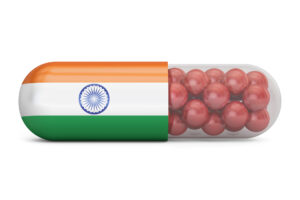 The need for API manufacturers to establish strong quality systems and plan for business continuity has never been greater than it is today. And you can probably guess the reason why.
The need for API manufacturers to establish strong quality systems and plan for business continuity has never been greater than it is today. And you can probably guess the reason why.
Following on the heels of SARS, Ebola, swine flu and other emerging pathogen threats we’ve seen in recent years, COVID-19 represents the bullet we didn’t dodge. It’s a global crisis that has been decades in the making.
Experts have been pointing to the warning signs for years: climate change, urbanization, increased population density in proximity to farm or forest animals, the spread of microbes accelerated by war, the global economy, international air travel, and more.
In addition, institutions like the World Health Organization (WHO), World Bank, and the Global Preparedness Monitoring Board have been issuing warnings about the risks of pandemics for decades. The Worldwide Threat Assessment published each year by the US intelligence community has been highlighting the vulnerability of the United States — and the world — to a potential pandemic since 2017.
Meeting the Challenges of the “New Normal”
When we’re finally able to see COVID-19 in our rearview mirror, there will be plenty of finger-pointing, for good and ill. In the meantime, the world is adapting to this new reality.
From our standpoint as an API manufacturer for the pharma industry, the changes have occurred in rapid-fire. Supply chain hiccups, followed by curtailed regulatory activities, followed by a further increase in trade nationalism around the globe, combined with the search across drug portfolios for anything that might offer hope in the fight against SARS-CoV-2 — all of these challenges arose over a short six months.
To their credit, the pharmaceutical and biopharma industries have risen to the challenge, despite having fewer staff and resources to work with during the crisis.
As travel restrictions and social distancing needs took hold, regulators have taken a hands-off approach, cancelling the usual inspections in order to protect the health and safety of both inspectors and pharma workers. In response, companies are stepping up to maintain quality control and worker safety. A variety of digital tools have been implemented quickly, including virtual audits and inspections.
The API manufacturing industry was also fortunate to have strong health and sanitation practices already in place when the pandemic broke out. These have since been bolstered by new practices, including daily employee health screenings, increased sanitation and hygiene requirements, limiting unnecessary visitors, requiring masks and other PPE equipment. Social distancing is enforced throughout the industry and remote work encouraged when possible. Many companies turned to the World Health Organization, US Centers for Disease Control and Prevention, and other health institutions worldwide for guidance, and some added additional safeguards of their own.
Securing Supply Chains
A key priority for maintaining quality is keeping global supply chains running smoothly. Manufacturers stay in constant contact with suppliers, replacing face-to-face communication with video meetings and other digital technologies. Many also moved quickly to diversify and strengthen supply chains in order to minimize potential disruptions.
 India, which manufactures about a third of all medications and 70 to 80 percent of generics, is a case in point. The country could potentially face supply shortages and price increases in the event of an extended shutdown. According to a report by HDFC Securities, however, there is limited immediate risk. Most companies are maintaining an inventory of 3–4 months and are closely monitoring the situation.
India, which manufactures about a third of all medications and 70 to 80 percent of generics, is a case in point. The country could potentially face supply shortages and price increases in the event of an extended shutdown. According to a report by HDFC Securities, however, there is limited immediate risk. Most companies are maintaining an inventory of 3–4 months and are closely monitoring the situation.
For the longer term, India’s government announced new incentives in July to boost domestic manufacturing of active pharmaceutical ingredients (API) and key starting materials (KSM). According to Fitch Ratings, this initiative could improve backward integration over the next few years and curtail supply-chain disruption risk for Indian drug makers.
What the Future Holds
In the years to come, we will undoubtedly see focus on more robust preparedness. Supply chains, in particular, are already becoming more diverse in an effort to minimize reliance on a single source of raw materials. Companies willing to take these precautions now are likely to realize dividends quickly in the event of a future health crisis, geopolitical tensions, or other disruptions.
 One of the outcomes of the COVID-19 crisis has been an accelerated adoption of new tools by the pharma industry.
One of the outcomes of the COVID-19 crisis has been an accelerated adoption of new tools by the pharma industry.
The sudden need for collaboration and information sharing platforms materialized to make use of the newest technologies – allowing companies to maintain quality, make and track orders, and get support quickly from suppliers, despite social distancing and travel restrictions.
These (and other) technologies will continue to enhance the speed and efficiency of the industry long after the pandemic era has ended.










